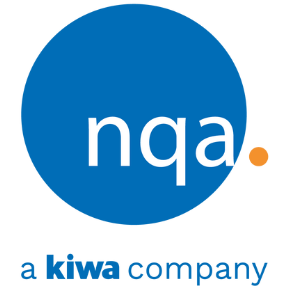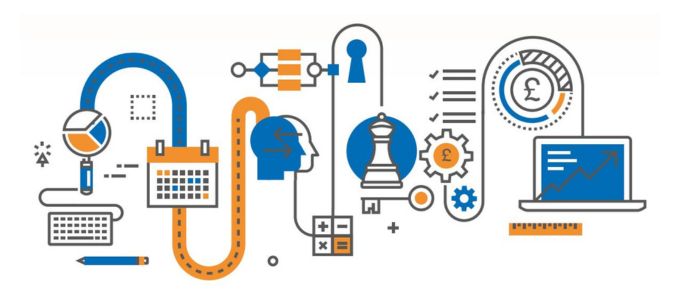A Guide to Implementing ISO 13485
The ISO 13485 Implementation Guide is an invaluable resource for organisations aiming to achieve certification for Medical Device Quality Management Systems. This guide offers a comprehensive, process-oriented framework that simplifies the implementation and integration of ISO 13485, ensuring high-quality compliance in the medical device sector.
In the following sections, we will delve into the essential features of this guide and how it can facilitate your certification journey.
Why ISO 13485 matters
This standard is crucial for organisations in the medical device industry as it sets the standard for a quality management system tailored specifically to their unique needs.
Compliance with ISO 13485 ensures that medical devices consistently meet customer and regulatory requirements, improving product safety and reliability. Additionally, achieving this certification can open doors to global markets, as it is recognised and respected worldwide, providing a competitive edge in the industry.
A brief history of ISO 13485
ISO 13485 was first introduced in 1996, based on the ISO 9001 framework but tailored for medical devices. It has undergone several key updates, with major revisions in 2003 and 2016, aligning its focus on risk management and regulatory compliance. This evolution underscores the industry's commitment to patient safety and product quality, cementing ISO 13485 as a critical standard for medical device manufacturers.
Benefits of implementing ISO 13485
Implementing ISO 13485 offers numerous advantages to organisations in the medical device industry. This standard ensures that medical devices, regardless of origin, meet consistent quality and reliability standards, facilitating market expansion and regulatory approval. Below are some key benefits of ISO 13485:
-
Market expansion: can open doors to major markets such as the European Union and Canada, providing a competitive edge.
-
Regulatory approval: simplifies the regulatory approval process in many regions.
-
Quality commitment: signals organisation’s dedication to producing the highest quality medical devices.
-
Preferred partnerships: larger medical device companies often prefer working with ISO 13485 certified vendors, boosting business opportunities.
-
Subcontractor compliance: the 2016 update requires companies to ensure subcontractors also meet ISO 13485 standards, fostering a compliant supply chain.
-
Efficiency and cost reduction: access to accurate information reduces development time and expenses, while a consolidated knowledge base helps identify issues, improve products, and streamline manufacturing processes.
What’s inside the ISO 22301 Implementation Guide
The PDF guide for implementing ISO 13485 is a vital tool for organisations seeking certification. Here’s an overview of its key sections:
Risk and process - based thinking / audits
Risk-based and process-based thinking are integral to the effective implementation and auditing of an ISO 13485 Quality Management System (QMS). Risk-based thinking involves assessing and prioritising audit frequency based on the potential risks associated with specific processes or business areas, ensuring high-risk areas receive more attention.
Internal audits allow organisations to evaluate adherence to policies, procedures, and ISO 13485 requirements, providing valuable insights for improvement. External audits, conducted by customers, regulators, or certification bodies, offer an independent evaluation of the QMS, demonstrating a commitment to quality.
A process-based approach ensures effective management of the transformation of inputs to outputs, with each process interrelated and contributing to overall objectives. In auditing, this approach defines the scope and criteria, establishes a clear course of action, and produces a defined output, such as an audit report.
Understanding process interrelation helps identify opportunities for improvement and optimise performance, while management reviews reflect on QMS performance and guide decisions on improvements. Together, these methodologies ensure a comprehensive and strong QMS, essential for compliance with ISO 13485 and maintaining high standards of quality and reliability in the medical device industry.
Clauses
ISO 13485:2016 consists of eight core clauses, distinct from the Annex SL structure used by many other ISO standards. This focus on regulatory requirements ensures that medical devices on the market are safe and effective.
The clauses include:
-
Scope: defines the boundaries of the standard and its application.
-
Normative references: lists essential documents for consistent application and regulatory alignment.
-
Terms and definitions: provides key terms to ensure clear interpretation.
-
Quality management system: outlines requirements for establishing and maintaining a robust QMS.
-
Management responsibility: highlights top management role in commitment and oversight.
-
Resource management: covers resource allocation, training, and work environment standards.
-
Product realisation: details planning, design, supplier management, and production control.
-
Measurement, analysis, and improvement: describes monitoring, audits, and corrective actions for continuous improvement.
These clauses cover all aspects of a quality management system, from defining the scope and terms to ensuring ongoing improvement, thus providing a comprehensive framework for compliance and quality assurance in the medical device industry.
Get the most out of your management systems
This section of the Implementation Guide offers invaluable advice for optimising your Quality Management System (QMS) for medical device manufacturing. It provides ten practical tips to ensure your QMS is effective, sustainable, and beneficial for your organisation. Key suggestions include aligning your QMS with your strategic direction, engaging all employees, and setting SMART quality objectives.
Additionally, the guide recommends using Process Failure Mode and Effects Analysis for risk assessment, creating a functional and user-friendly quality manual, protecting electronic documents, and crafting a transparent quality policy. Utilising diverse documentation methods, regularly reviewing monitoring activities, and securing top management commitment are also emphasized. These tips collectively improve engagement, streamline processes, and ensure your QMS is a strong tool for maintaining high standards and achieving compliance with the standard.
Next steps once implemented
After the initial implementation of the standard, further measures are required to maintain its effectiveness and compliance. This section outlines essential steps to take after your QMS has been implemented. It highlights the importance of awareness training at all management levels to foster a motivated environment.
The guide suggests developing integrated policies and objectives, conducting an internal gap analysis to compare existing systems against standard requirements, and creating detailed process documentation. It also emphasises the need for strong internal audits, management review meetings, and a thorough pre-certification gap analysis to ensure compliance and effectiveness. Finally, addressing corrective actions prepares the organisation for the final certification audit, paving the way for successful ISO 13485 certification.
NQAs final thoughts
By fully utilising our ISO 13485 Implementation Guide, your organisation can confidently prepare for successful certification and ongoing compliance. With detailed insights and essential steps, our Guide ensures superior quality management and continuous improvement.
Download the full ISO 13485 Implementation Guide here
![]()
Want to gain more knowledge on ISO 13485? Explore our latest training!
![]()
Confident in ISO 13485? Contact our friendly sales team to discuss how we can support you.


